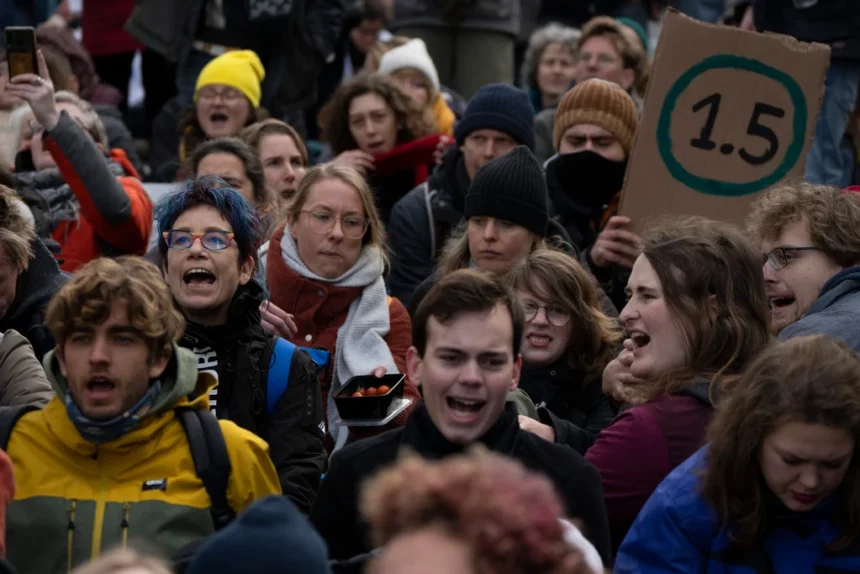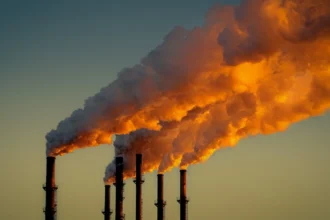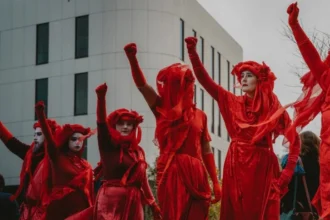The Urgency of Climate Adaptation
If we have learned anything from the past four decades of non-progress in the face of the climate emergency, it is this: there will be no silver bullets or supreme leaders capable of getting us through the mess we have created and avoid what could very well be a collapse of civilizations as our planet continues to heat up.
- The Urgency of Climate Adaptation
- Barriers, Emotions, and Climate Responses
- Some Things to Be Said About Emotions
- Basic Human Needs and Emotional Responses
- Social Structures Shaping Emotions
- Capitalism and Emotional Responses
- Pathways to Climate Inaction
- Mechanisms of Agency for Climate Action
- Belonging as a Catalyst for Change
- Empathy’s Role in Climate Advocacy
- Hope as a Motivator for Engagement
- How Does This Knowledge Help Us?
We now face the inescapability of many substantive impacts, and a necessary transition to our social systems at unprecedented speed and scale if we are to avoid that potential collapse. Unprecedented indeed, but not impossible.
One factor strongly linked to climate concern is care for others, in particular others outside of our immediate in-group.
To get there, we must engage that very same driver that has precipitated social change throughout history: people, committing to and organizing to support that change. The only way intentional social change occurs is when reflexive actors choose to problematize our current circumstances and commit to confronting them, individually, but even more importantly, collectively. Our response to the climate emergency will be no different.
Barriers, Emotions, and Climate Responses
If it is that straightforward, why haven’t we done so already? Among the many reasons identified by climate social scientists are structural factors like power and politics, consumerism, and disinformation. Personal interests in maintaining the wealth, lifestyles, and cultural beliefs that are intimately entangled with greenhouse gas-intensive activities also matter a great deal.
Some emotions feel good: pride, joy, love, excitement; and others feel bad: shame, fear, guilt, and despair.
However, structural forces and personal material threats and opportunities are by no means the only drivers of social responses to the climate emergency. Personal and social responses to the climate emergency also have to do with emotionality, both as a medium for power, politics, disinformation, consumerism and self-interest to operate, but also as a standalone dimension of agency.
Indeed, a substantial research record indicates that one factor strongly linked to climate concern is care for others, in particular others outside of our immediate in-group. This includes care for, and a feeling of connectedness to, nonhuman others, and Nature. Numerous other emotions also come into play as well.
These emotional responses to climate change are the focus of my new book, Feeling Climate Change: How Emotions Govern our Responses to the Climate Emergency (2024, Routledge), which explores the questions: How do emotions matter to social responses to the climate emergency? What differentiates emotional pathways to action from those favouring inaction? And how can this knowledge inform climate advocacy in productive ways?
Some Things to Be Said About Emotions
Contrary to early social science accounts that depict emotions as the annoying sibling of reason, research from the neurosciences over the past few decades has made clear that emotions play crucial roles in our behaviour and decision-making.
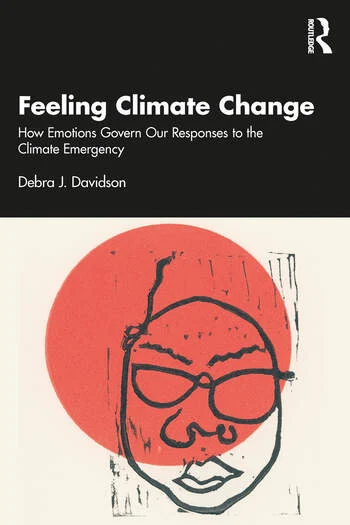
Feeling Climate Change reveals how our emotions drive the collective action necessary to address the climate crisis.
Emotions are our means of responding to information and stimuli in our environment by drawing our attention to matters of concern: to our own survival and wellbeing, and also to the things we value, including the others within and beyond our social networks, our communities, animals, landscapes, or democracy and justice.
This understanding of emotions is particularly germane to our personal responses to information about climate change: those emotion triggers, which are the starting point for decision-making and action, need to be felt, not just heard. In other words, information alone is not sufficient; that information must be linked by the perceiver to something they value.
Basic Human Needs and Emotional Responses
Our rich but sometimes messy emotional baggage was developed to support survival, via group living, and the cooperation it enables.

That emotionality is in many ways linked to the fulfillment of a few basic human needs in addition to physical survival, including two in particular which sometimes are in tension: autonomy, facilitated by a sense of efficacy and the capacity for reflexivity; and belonging, which provides us with ontological security and identity.
Those emotions most pertinent to these human needs are guilt, shame, pride, and empathy, which I discuss in detail in the book. A second important point about emotions that neuroscience tells us, and which is particularly important to our responses to the climate emergency: some emotions feel good: pride, joy, love, excitement; and others feel bad: shame, fear, guilt, and despair.
We tend to gravitate toward situations, people and information that are associated with those positive emotions, and away from those that generate negative emotions. Intentionally moving toward, sitting with, negative emotions, as we must do sometimes, takes a tremendous amount of effort and commitment.
Social Structures Shaping Emotions
There is another important feature of our emotionality that tends not to be discussed much among neuroscientists, but has been brought to light by sociologists, geographers, and others: social structures are part of that environment to which we emotionally respond, and those structures also shape our emotionality, by offering rewards to certain people and certain behaviours, and sanctions to others.
The number of people across the globe who are personally invested in taking action continues to grow.
In the book I look at three structures -capitalism, colonialism and patriarchy- that permeate modern social institutions, divide us into compartments of the empowered and disempowered, the agents and the objects.
These structures have particularly deleterious effects on our potential to confront the climate emergency, not just directly, by supporting unchecked exploitation of the natural world, but also indirectly, by stifling those very human capacities that would otherwise be engaged to address the resulting collective action problems.
Capitalism and Emotional Responses
Take capitalism, for example. The direct impact of capitalism upon the natural world is clear, driven by the structural incentives for exploitation to generate surplus value, and the creation of material demand through consumerism.
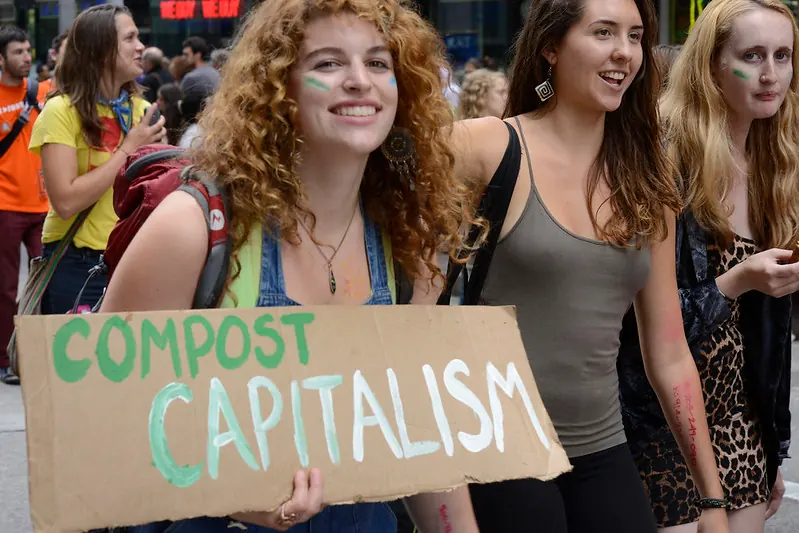
Capitalism, however, also imprints itself upon our emotionality. Among other things, capitalism polices our emotionality to support quiescence; and defines us as atomized workers and consumers.
Hope is about potentialities much more than probabilities.
The resulting individuality, aggression, personal insecurities, and above all fear, are the types of emotions that are allowed to flourish in a capitalist system, while emotions that support community-building, which is ultimately the strongest source of resistance to capitalism, are not rewarded but sanctioned.
Capitalism is in effect a community killer, cultivating individuality, selfishness, disempowerment and the fears associated with it, while compromising our inherent capacities for cooperation and collective living.
Pathways to Climate Inaction
So, we have all inherited a rich and complex emotionality, including those emotions that directly support our very high capacity for cooperation. Yet we are also embedded in social systems that divide us. In addition, as discussed above, action triggers must be felt, not just heard, and yet climate change information is all too often presented in a manner in which its relevance to the things we value is obscured by scientific and technocratic language. These are some of the key reasons why climate inaction is so prevalent in Western societies.
Climate inaction can be further understood as following four distinct emotional pathways, described in detail in Feeling Climate Change.
- Apathy, for example, describes inattention: that emotion trigger is simply not activated, perhaps as a result of busy, stressful lives that occupy our emotional attention, or optimism bias—believing that everything will be okay.
- Denial, on the other hand, describes a strongly emotional response to climate information, but for these individuals, it is not climate change itself, but rather the implications of climate science and policy, which is perceived to be so threatening as to be rejected.
- The responses of many others today could be described as withdrawal: a high degree of alarm, amounting to anxiety about the climate emergency, combined with low personal efficacy, motivating these individuals to turn away.
- And then there is a fourth category, those who agree that climate change is a serious concern and have the personal capacity to do something about it, but they do not. Instead, these individuals feel stuck in a state of cognitive dissonance which can lead to feelings of despair, possibly in part due to low perceived collective efficacy -in other words cynicism- about whether their engagement in personal and collective action will make a difference.
Mechanisms of Agency for Climate Action
Despite the many features of our lives that favour inaction, the number of people across the globe who are personally invested in taking action continues to grow. For these individuals, the emotion trigger has hit its mark, upon someone with high personal and collective efficacy.
But sustained action must also have positive emotional rewards, and agency does not surface automatically, even in the presence of such favourable conditions as concern and efficacy. As detailed in the book, the presence of one or more mechanisms of agency is crucial.
Feeling Climate Change describes seven mechanisms, including: norms of responsibility, efficacy, belonging, empathy, complexity-thinking, future-gazing and hope, of which three are elaborated upon briefly below.
Belonging as a Catalyst for Change
Belonging is a basic human need, the absence of which is nothing short of emotionally debilitating. Anyone, even members of privileged positionalities, who contemplate beliefs and actions that conflict with the dominant norms and beliefs of their in-group, can feel alienated.
As a result, the first temptation among those individuals who come to find themselves questioning the beliefs, norms and practices of their in-groups is to keep quiet, to avoid the shame that may result from group confrontation. But those individuals may and do also begin to peek beyond group borders, to see if there might be a different group that might be more in alignment with one’s shifting personal identity.
Pursuing membership in new groups and social networks can then lead to exposure to new information, norms and values that validate rather than shame. Re-orientation of one’s social networks thus creates openings for imagining new beliefs and practices, and those networks simultaneously provide the emotional support for embracing those beliefs and engaging in those practices.
Empathy’s Role in Climate Advocacy
Possibly the most important emotion with bearing on social responses to the climate emergency, empathy is rather complicated, consisting of three elements according to Jean Decety and colleagues: affective sharing, which describes an autonomic response to a situation some other being is experiencing; empathic concern, describing the degree to which the observer feels care and concern for what that other being is experiencing; and perspective taking, a cognitive capacity to put oneself in the shoes of another, which, particularly in the case of dissimilar Others, implies a deliberate choice to invest the mental effort required to do so.
If we don’t act on hope once it surfaces, it will quickly slip away.
Empathy is most readily invoked in response to situations faced by others in our in-groups—family, community, team members, co-workers, as well as ethnic, political or national identities.
Such expressions of in-group empathy may in certain circumstances support pro-climate action, particularly in situations in which members of that in-group are particularly vulnerable to the impacts of climate change.
In-group empathy cuts both ways, however, shaping for example whether one experiences a fear for climate refugees, or a fear of climate refugees. For this reason, expanding our empathy maps, to use Arlie Hochschild’s phrase, is an important element to pro-climate action. Empathy map expansion is something we are all capable of, and many of us have already done so in many ways.
Certain personal experiences can lead to empathy map expansion, for example, when those experiences are shared among individuals not currently in our in-groups. We also have the capacity for empathy toward non-human others, the cultivation of which also facilitates pro-climate action.
Hope as a Motivator for Engagement
The third and final agency mechanism I will focus on here is hope. Hope requires contemplation—it is a feeling, in other words, that demands full engagement of our frontal lobes. To embrace hope also reflects an engagement with uncertainty. Hope is about potentialities much more than probabilities. Hope is felt today, but the vision or object that inspires the hope has not yet come to pass, and may not.
Indeed, the very concept of hope entails awareness of the possibility that the object of hope may never come to pass. A big mistake many people make is to confuse hope with optimism. If I am optimistic about a particular outcome coming to pass, it means I believe the probability of that outcome coming to pass is higher than not. Hope is something else entirely. I hope when probabilities are small, perhaps even vanishingly small. Why might I be inclined to assume such a seemingly irrational position?
We certainly do not assign hope to every situation that entails slim chances of success. We hope, despite low odds of success, when the outcome in question is one that we care about deeply. Hope mediates our fears, and enables us to take action despite them. Hope motivates engagement and sustains that engagement, particularly as it becomes a collective emotional experience. Hope also inspires creativity in collective action.
That creativity is particularly important in the face of the climate emergency, for which the object of hope is elusive. In this situation, the activation of future imaginaries comes to the fore. Without a vision, even a utopian one, of possible futures, what is there for hope to attach itself to? Hope is slippery, though. If we don’t act on hope once it surfaces, it will quickly slip away.
How Does This Knowledge Help Us?
We all face the need to dig deeper than ever to support engagement and cooperation to support climate adaptation and mitigation, at the very same time that our emotional capacity to do so is stretched thin.
On top of this, our emotional intelligence has been seriously compromised by capitalism, colonialism, and patriarchy. Overcoming the emotional barriers to climate action are thus paramount.
This suggests a need to pivot climate advocacy efforts away from evaluations of personal carbon footprints, and start evaluating them on the basis of how they contribute to building emotional capacity for cooperative investments in societal transition, through the cultivation and enrichment of those basic human needs we started with: autonomy, including both efficacy and reflexivity, and belonging. Most importantly, climate action needs to be a labour of love, not just fear.


